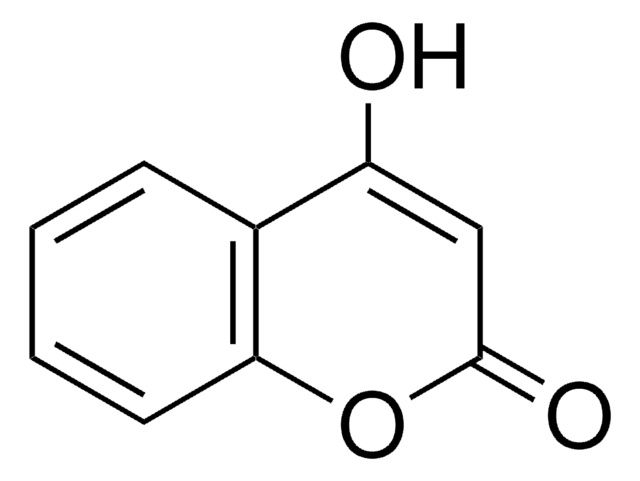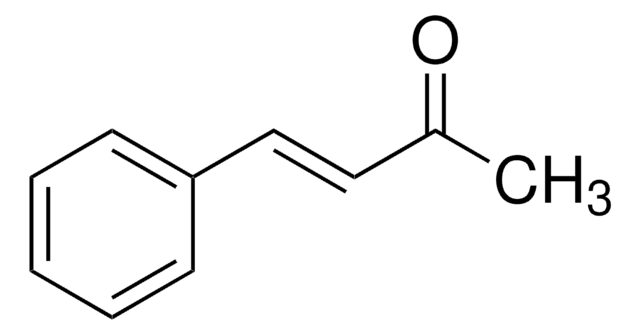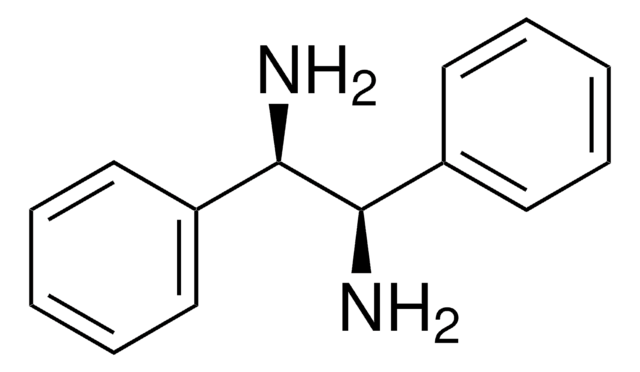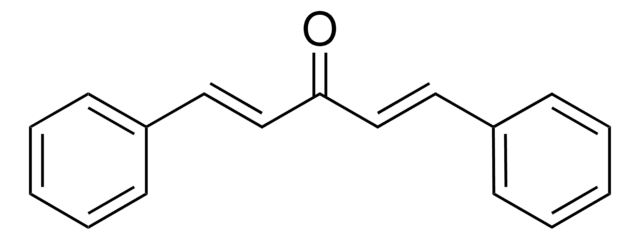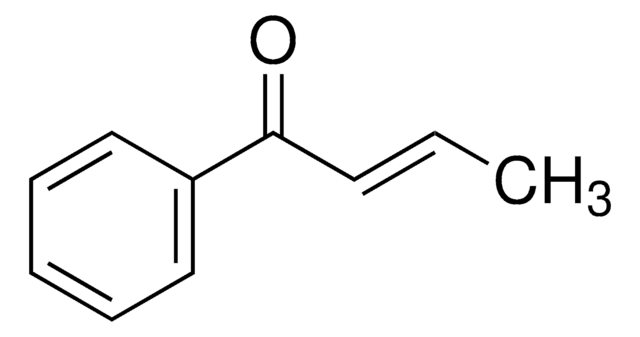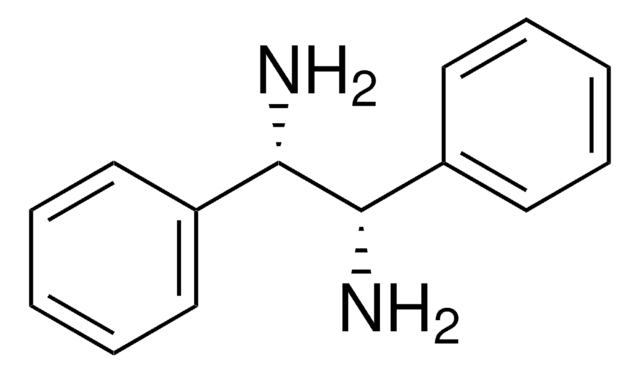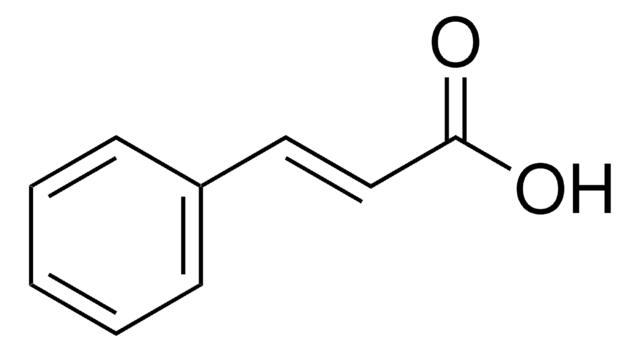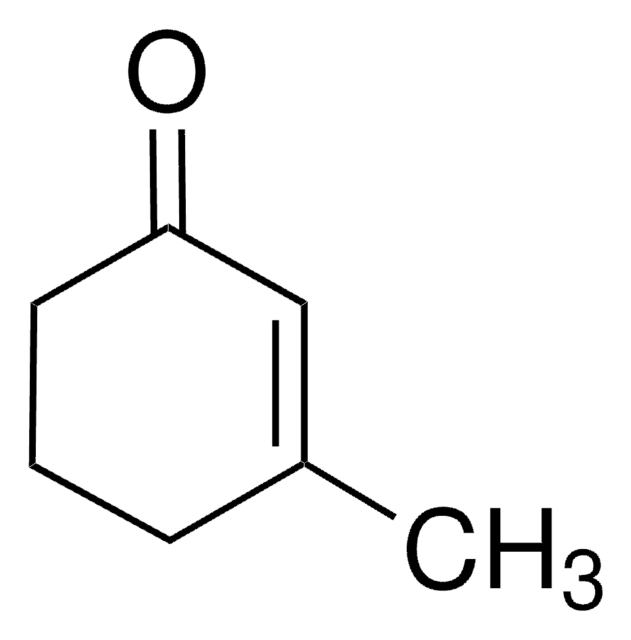Wichtige Dokumente
241091
trans-4-Phenyl-3-buten-2-on
≥99%
About This Item
Empfohlene Produkte
Dampfdruck
0.01 mmHg ( 25 °C)
Qualitätsniveau
Assay
≥99%
Form
solid
bp
260-262 °C (lit.)
mp (Schmelzpunkt)
39-41 °C (lit.)
Löslichkeit
alcohol: freely soluble(lit.)
benzene: freely soluble(lit.)
chloroform: freely soluble(lit.)
diethyl ether: freely soluble(lit.)
petroleum ether: very slightly soluble(lit.)
water: very slightly soluble(lit.)
Funktionelle Gruppe
ketone
phenyl
SMILES String
CC(=O)\C=C\c1ccccc1
InChI
1S/C10H10O/c1-9(11)7-8-10-5-3-2-4-6-10/h2-8H,1H3/b8-7+
InChIKey
BWHOZHOGCMHOBV-BQYQJAHWSA-N
Verwandte Kategorien
Allgemeine Beschreibung
Signalwort
Warning
H-Sätze
Gefahreneinstufungen
Eye Irrit. 2 - Skin Irrit. 2 - Skin Sens. 1 - STOT SE 3
Zielorgane
Respiratory system
Lagerklassenschlüssel
11 - Combustible Solids
WGK
WGK 3
Flammpunkt (°F)
>230.0 °F
Flammpunkt (°C)
> 110 °C
Persönliche Schutzausrüstung
dust mask type N95 (US), Eyeshields, Faceshields, Gloves
Hier finden Sie alle aktuellen Versionen:
Besitzen Sie dieses Produkt bereits?
In der Dokumentenbibliothek finden Sie die Dokumentation zu den Produkten, die Sie kürzlich erworben haben.
Kunden haben sich ebenfalls angesehen
Unser Team von Wissenschaftlern verfügt über Erfahrung in allen Forschungsbereichen einschließlich Life Science, Materialwissenschaften, chemischer Synthese, Chromatographie, Analytik und vielen mehr..
Setzen Sie sich mit dem technischen Dienst in Verbindung.